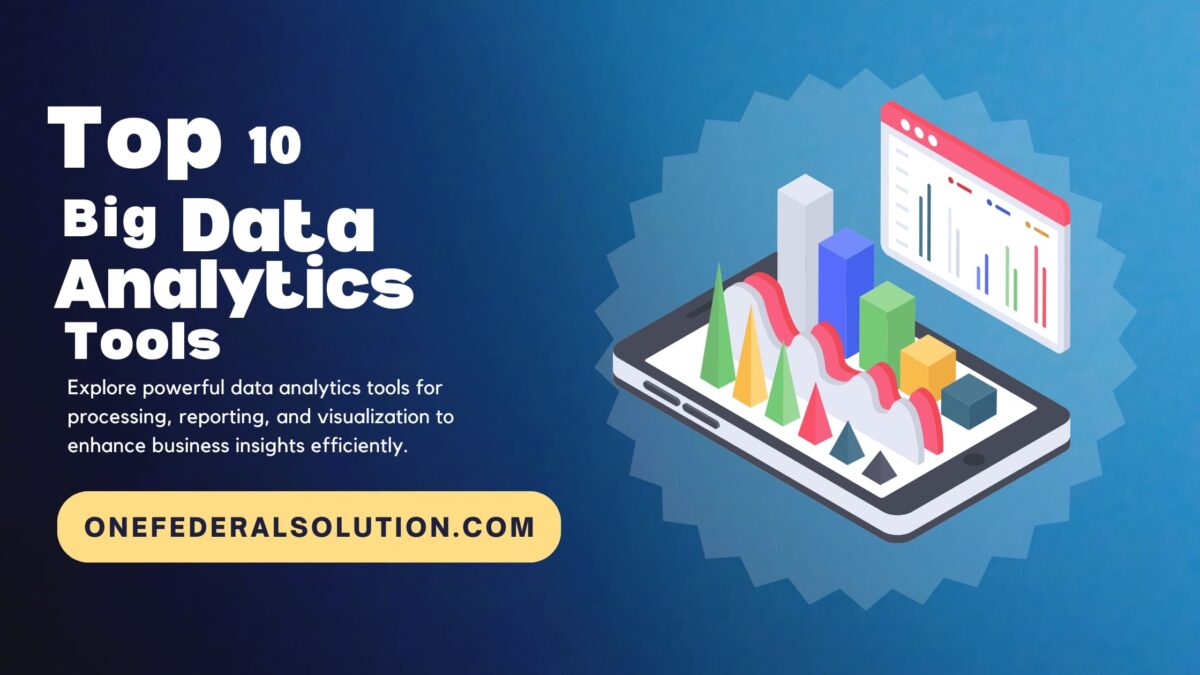Every time we click, search, shop, or scroll online, data is created. However, raw data alone doesn’t provide much help unless we can understand and utilize it. That’s where big data analytics tools come in.
With these tools in place, organizations can arrange and decode a large volume of data to make informed decisions. Therefore, it makes sense to have a big data tool to meet your goals, whether it is understanding the market, learning customer behavior, or analyzing how past purchases have behaved.
Here we will learn about big data analytics tools as well as their usage, benefits, and how they are transforming the operations.
What Are Big Data Analytics Tools?
Big data analytics tools are software programs designed to collect, process, and analyze huge volumes of data—often from multiple sources at once. Unlike traditional data tools (like spreadsheets), these tools can handle data that is:
- Large in size (think terabytes or petabytes)
- Varied (text, images, videos, numbers, logs)
- Fast-moving (real-time data streams)
These tools help businesses spot trends, understand customer behavior, detect risks, and improve operations.
Benefits of Big Data Analytics Tools
Using big data analytics tools gives companies a competitive edge. Here are the key benefits of big data analytics tools:
Better Decision Making
One of the biggest advantages of big data is that it helps people and organizations make smarter decisions. Instead of guessing or relying on outdated information, companies can analyze current trends and patterns in real-time. For example, an online store can track what products are being searched for most today and adjust its inventory or promotions accordingly.
This way, it helps make faster, more accurate decisions benefitting both the business and its customers.
Understanding Customers Better
Big data lets organizations learn more about their customers. They can analyze browsing habits or check their purchase history. Even they can analyze the feedback to see which of their products are liked or disliked and why. Based on this data, they can personalize their offerings, improve customer support, and build better rapport. For example, Netflix has utilized big data to suggest shows or movies based on their customers’ past viewing habits.
Improving Efficiency and Reducing Costs
Companies can also use big data to find ways to work smarter. It helps identify areas where time and money are being wasted. For example, a delivery company can use data to find the fastest routes and avoid traffic, saving fuel and time. A factory can analyze machine performance and predict when equipment might fail, allowing for timely repairs and avoiding costly breakdowns.
Innovation and Product Development
Big data fuels creativity and innovation. It helps companies discover gaps in the market or new customer needs. Businesses can create new products or services based on what the data tells about the requirements of their target audience. The healthcare industry uses big data to develop new treatments, predict disease outbreaks, and improve patient care by studying health trends.
Risk Management and Fraud Detection
Another important benefit of big data is the ability to spot risks and prevent fraud. Banks and financial institutions use big data to detect unusual activity, such as sudden large withdrawals or purchases in strange locations. These patterns help identify fraud early and protect customers. In other industries, data can reveal security threats or weak spots before they become serious problems.
Helping Society and the Environment
Big data isn’t just for business. Governments and organizations use it to make communities better and safer. For example, cities use traffic data to plan better roads and reduce congestion. Health agencies track disease outbreaks and respond faster. Environmental groups use data to monitor air and water quality, helping protect the planet.
How Big Data Analytics Tools Are Transforming Industries
These tools are not just changing how companies use data—they’re transforming entire industries. Let’s look at a few examples:
1. Retail
Retailers use tools for big data analytics to understand shopping habits, manage stock, and personalize promotions. For example, online stores like Amazon suggest products based on your browsing history.
2. Healthcare
Hospitals and clinics analyze patient records to improve care. Tools help doctors predict diseases, recommend treatments, and manage hospital resources more effectively.
3. Finance
Banks use analytics tools to detect fraud, evaluate loan risks, and understand market trends. Real-time analysis helps them stay ahead of economic changes.
4. Transportation
Logistics companies like FedEx use big data tools to track packages, optimize delivery routes, and predict delays based on weather or traffic.
5. Manufacturing
Manufacturers use data to monitor machines and predict when they need maintenance—saving downtime and repair costs.
6. Education
Schools and universities track student performance, identify learning gaps, and create personalized learning plans using analytics.
7. Entertainment
Streaming platforms like Netflix analyze viewing habits to suggest content and decide which shows to produce next.
Challenges of Using Big Data Analytics Tools
While the benefits are huge, there are also some challenges:
- Data Privacy: Managing customer data safely is a big responsibility.
- High Costs: Some tools and storage systems can be expensive.
- Complexity: Setting up and running these tools often requires expert knowledge.
- Data Quality: Inaccurate or messy data can lead to wrong insights.
That’s why many businesses invest in data professionals or partner with analytics firms to make the most of these tools.
The Future of Big Data Analytics
The future is even more exciting. As technology improves, big data tools will become faster, cheaper, and easier to use. New trends include:
- Artificial Intelligence (AI): Tools will learn from data and make decisions automatically.
- Edge Computing: Data will be processed closer to where it’s created (like on phones or machines) for quicker results.
- Data-as-a-Service (DaaS): Companies can buy access to tools and insights without managing any infrastructure.
Soon, almost every business—large or small—will use data analytics in some form.
Conclusion
In summary, big data analytics tools are changing how businesses work by helping them understand their data like never before. Whether it’s predicting customer needs, improving operations, or cutting costs, these tools offer real value.
To recap:
- What are big data analytics tools? They are software programs that analyze large, complex data.
- What are the benefits of big data analytics tools? Faster decisions, better customer service, cost savings, and more.
- How are they transforming industries? From healthcare to retail to finance, every industry is feeling the impact.
As data continues to grow, the companies that use it wisely—with the right tools—will lead the way into the future.





















